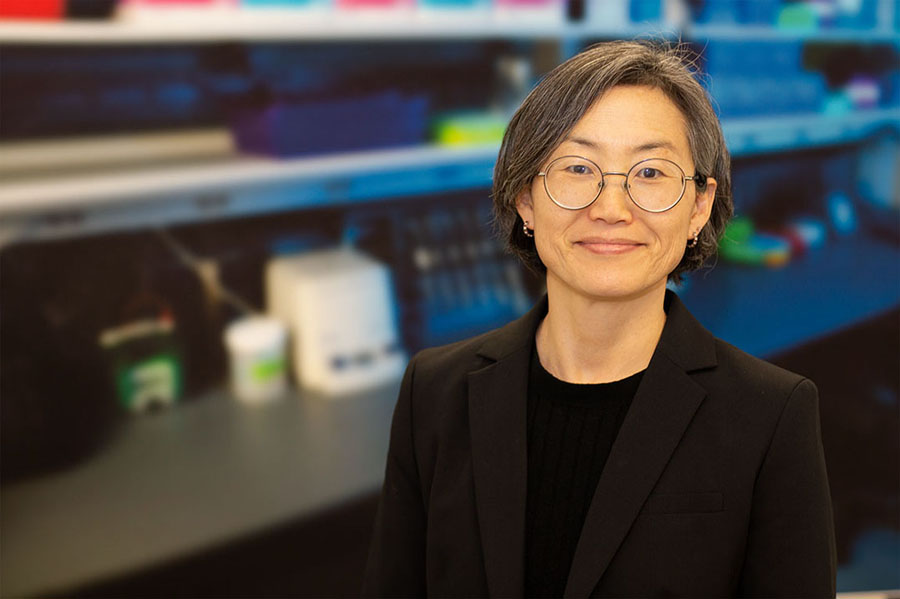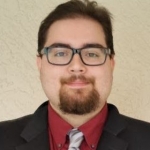I am here today with Dr. Sue Kim, leader of the PAL block director curriculum committee. (Personal Active Learning is a 6-week block of self-directed learning between the first and second year of medical school at UACOM – Phoenix). We are here today to discuss the new “Cafecitos en la Casa” PAL block program and the introduction of medical Spanish in our school’s curriculum. “Cafecitos en la Casa” is a virtual medical spanish collaboration that involved upperclassmen and faculty at UACOM – Phoenix mentoring rising second-year students in developing Medical Spanish skills.
How did the idea of the Cafecitos first come up? What was your role in setting up the curriculum?
This event was student run, and I acted as a focal point for getting procedure processes in place. The student initiative is what made it so amazing. The results were on par with a faculty-run program. I was especially surprised by the level of mentorship from the third- and fourth-year students that developed throughout the course—being able to ask how Spanish applied to the clinic and really learning from the upperclassmen was a piece of strong feedback from the first years.
The idea for the Cafecitos program was something I have been thinking about doing as PAL director in conjunction with the Medical Spanish elective. PAL is a great way to start off every year, and a student can do structure their learning in a variety of directions. I facilitate the safety of students, the legal counsel if needed, and the administration who may be receptive to new plans. Because of COVID, I was in a position to come up with new virtual courses, and I couldn’t rely on having students meeting in person. I then came up with the idea of virtual Spanish chat rooms. I worked with Dr. Briney, who agreed to help me run the course as an assistant and that is how we started. I contacted the first years, who were the start of this seed. Once I had enough interest, we called upon the third- and fourth-years who were willing to help and expand the curriculum.
What is it like working with students to develop this course?
There were a total of 12 students who helped volunteer and establish this group, and I am thankful to all of them. In addition, the LMSA has been a powerful ally in the development of this project, and they helped with resources and scripting of several of the sessions. The timing was wonderful and the position serendipitous. This has led to the culminating point regarding the incorporation of virtual Spanish and preparing the underclassmen for the clinic using Spanish.
A lot of students who came to cafecitos had high school level Spanish experience. For them, it was a review of four years ago, but it was surprising to so many of them again how quickly it came back. Hearing the joy in the voices of the students was a true delight.
What is the biggest complication with development of designing a course like this?
As the PAL block director, I know a thing or two about how PAL curriculum is set. I usually help the other faculty develop and bring courses to life. For instance, there was a radiology club that was going to meet over PAL, but instead was able to focus on reading journal articles. For this case though,the biggest hurdle was faculty time. Finding Spanish-fluent faculty members was a challenge, from both a time and work stress perspective. However, the upperclassmen were able to help provide a meaningful educational experience. Faculty is important for the fourth-year elective; however, for this pal course I think the students performed marvelously.
For several years, we have had a Medical Spanish Canopy on-line course available to PAL students via the Office of Diversity and Inclusion. Cafecitos is a wonderful addition to Canopy catalogue, and I hope we can continue to offer students opportunities to learn medical Spanish.
How did you feel about the incorporation of Zoom technology?
For the most part, Zoom worked very well, but there are areas of improvement. The convenience factor is amazing, and the online Cafecitos is able to thrive in that setting. There were some minor hiccups, including one case where the software dropped in some lessons; however, I think that with more time and experience this will go over even more smoothly.
Thank you for your time in this interview today, Dr. Kim. What do you think is the most important purpose for a course like this?
Medical Spanish is so helpful and important to developing relationships with patients in the clinical setting. It can be so minor to a patient, but that fact that there is the connection, established in Spanish, can make a patient feel that human touch. I want to help our students become the best physicians possible for all our communities, and I hope this is the start of something wonderful.
Mohammad Khan is a fourth-year medical student in The University of Arizona College of Medicine – Phoenix, Class of 2021. He graduated from Arizona State University in 2014 with two bachelor's degrees in biochemistry and biology. He then worked as a teacher and completed a Master's in biomedical diagnostics in 2017. For fun, Mohammad (who also goes by Mokha) likes to practice at the archery range, work on calligraphy, game, and fountain pen writing, and read science fiction novels. He is interested in medicine with a focus on educating patients.


